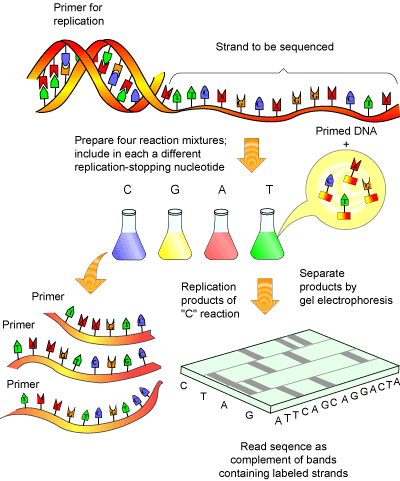
The Short History
Ever since genetic biology has established itself in the minds of innovators as a science capable of being manipulated, scientists have begun to wonder how to control the biological makeup of life. The development of a synthetic microbe had only proved successful in recent years, despite the many ideas and theories that have spanned from the nineteenth century. Since then, this field has managed baby steps in its advancements and continues to steadily grow in producing a future of micro-workers.
Development:
The Concept of the Synthetic Microbe
It is rather astonishing to find that the humble beginnings of this new innovative field began back in the 1800's with a German chemist named Friedrich Wöhler. In 1828, Wöhler made a fascinating and unusual discovery. He found a way to transform ammonium cyanate into urea. By doing so, he proved the fluid connection between living and non-living. During this time period, the uncrossable line between organic and inorganic was commonly accepted by intellectuals and researchers alike. This news about the ability to "cross" this line had rocked the science biome and paved the way for future experiments.

One such theorist is Stephane Leduc, a French medical scientist and biologist. In 1912, he wrote the book, La Biologie Synthétique, in which he stated that the only way to truly understand biology is to be able to control the natural phenomena of life.

In 1911, a biologist named Jacques Loeb theorized:
"[it] must be emphasised that modern biology is a purely experimental science, the results of which can take only one of two possible forms: either we succeed in controlling a life phenomenon to the extent that we can evoke the same whenever we wish (for example, muscle twitches or the chemical stimulation of the development of certain mammals’ eggs); or else we manage to identify the numerical connection between an experimental condition and the biological result (such as in the Mendelian law)."

The First of its Kind:
Mycoplasm Mycoides
It might be surprising to note that with all the theorization and ideas leading up to synthetic microbes, it is not until recently that this technology had actually developed a microbe. On May 21, 2010, ABC news writer, Michael Smith, writes about a man name Craig Venter. Craig Venter, the head of the J. Craig Venter Institute or JCVI, had recently created the world's first synthetic microbe. Although it is just a copy of a common yeast producing bacterium, it was the first copied chromosome to have been completely synthesized by computers. This particular chromosome had 1,080,000 base pairs, each pair singularly synthesized and painstakingly put together to create the bacterium's genome. This is a huge jump in the development of the synthetic microbe and puts us a bit closer toward the goal of a world created by synthetic microbes.

Development:
The Technology that Creates Synthetic Microbes
1869 - Friedrich Meisher discovered a material he called "nuclein" from a sample of sperm. He soon isolated this material and renamed it DNA.
1929 - Phoebus Levene identified the parts of DNA: The four bases, Adenine (A), Cytosine (C), Guanine (G), and Thymine (T); a sugar, and phosphate
1940 - Erwin Chargaff developed Chargaff's rule where A=T and C=G
1955 - UC Berkeley professors, Heinz Fraenkel-Conrat and Robley Williams, have deconstructed a virus commonly found in tobacco and reassembled the virus back again. This showed the possibility of recreating whole cells
1970's - Cornell University biochemist, Efraim Racker, have separated a cell into miniature versions of that cell using detergents. Later, he was able to reconstruct the electron transport reaction and ATP synthesis in the mitochondria of that cell. As a result, Racker had recreated two basic functions of the cell.
1977 - The development of the Maxam and Gilbert DNA sequencing procedure and the Sanger, Nicklen and Coulson method, resulted in the first complete DNA sequence (phage ϕX174).
1978 - Werner Arber, Daniel Nathans, and Hamilton O. Smith won the Nobel Prize in Physiology or Medicine for discovering the restriction enzyme that allowed scientists to cut specific parts of DNA and isolate it. This leads to the beginning of genetic engineering and later, synthetic microbes.
2004 - The first conference about synthetic microbes is held at MIT.
ALL OF THIS LEADS TO THE FIRST SYNTHETIC MICROBE!!!!
Genetic engineering is like the old man in the house, while its possible successor, synthetic microbes, could possibly change the system in which we create life forms. Genetic engineering is the insertion of a foreign gene into an organism in order to produce a desired product. While this technology is fine, it generally is not cost-effective and allows critics to continuously find faults in the design of the genetically-modified organism. However, a synthetic microbe can be redesigned to allow for all problems to be solved and even have a contingency attached to it.
Comparing synthetic microbes and genetic engineering (traditional tech)?
